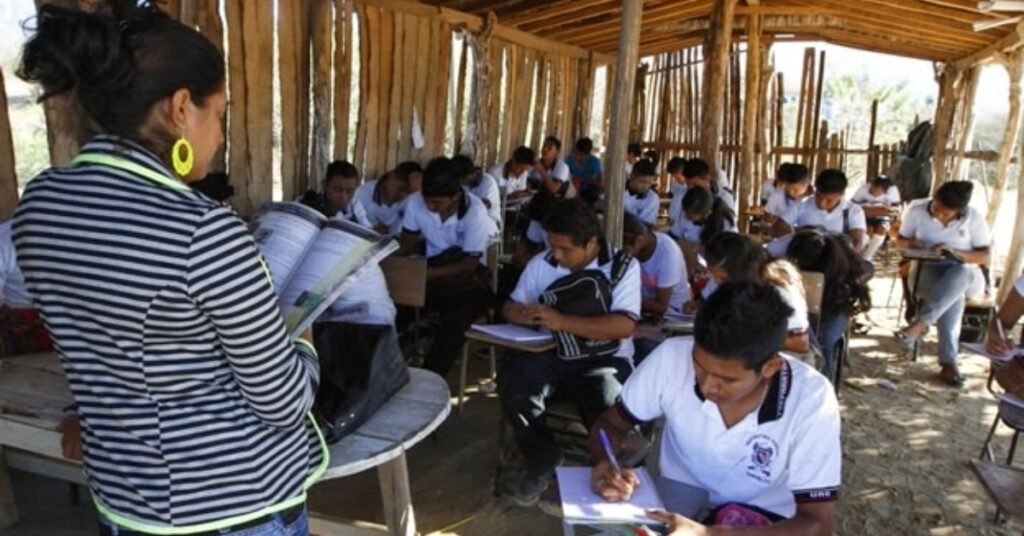In Mexico, the educational landscape reveals significant disparities and challenges. One in ten schools does not have electricity, one in four lacks access to drinking water, and only three in ten schools are connected to the internet. This stark reality affects millions of primary school students who are denied the fundamental infrastructure necessary for a quality education.
A Grim Picture Across the Nation
María Delia Rodríguez, an early childhood education teacher in Sonora, exemplifies the struggles faced by educators across the country. “We don’t have a school, a classroom to teach in,” she said, highlighting the dire conditions under which she and her colleagues work. “We have already managed schools for the children, but we still don’t have information, we don’t know what’s happening.” Her statement underscores the uncertainty and frustration felt by many teachers who strive to provide education in substandard environments.
Findings of the INEGI Census
The deficiencies in Mexico’s educational system were starkly highlighted in an official census released at the end of March by the National Institute of Statistics and Geography (INEGI). This census was part of an education reform announced in February 2013, aiming to provide education authorities with a comprehensive view of the conditions faced by students and teachers. The census revealed several critical flaws:
- 25% of basic education schools are in facilities not specifically constructed for teaching, with preschool levels having the highest number (29%).
- 36% of schools lack drainage systems.
- 24% of schools do not have water from the public supply.
- 10% of schools lack bathrooms.
- 8% of schools do not have electric power.
- 59% of schools lack emergency exits.
- 58% of schools are without evacuation routes, and 54% lack safety areas for emergencies like earthquakes.
- 15% of schools do not have chairs for students.
- 10% of schools lack chalkboards.
- 20% of schools do not have desks or chairs for teachers.
- 40% of schools are without computers.
- 61% of schools do not have internet access.
From these data points, it can be deduced that 45% of preschool, elementary, and middle school students do not have access to a computer in their school, while 61% lack internet access.
A Broader Impact on Students and Teachers
In total, 2,215,201 students were not included in the census, representing 8.9% of the student body in basic education. Additionally, 158,565 teachers refused to participate in the census, representing 8.1% of the total. The majority of these teachers are from Chiapas, Oaxaca, and Michoacán, states with a strong presence of the National Coordinating Committee of Education Workers (CNTE). This dissident group within the teachers’ union opposes the education reform, arguing that it affects the labor rights of their members by requiring periodic evaluations to maintain their positions.
Eleven Years of Struggle in Oaxaca
Daniel Alberto López Morgan, director of an elementary school in Oaxaca, shares a similar plight. For eleven years, his school has operated under precarious conditions with tin roofs and makeshift walls provided by parents. “Unfortunately, we do not have a building that is truly favorable for our students,” he lamented. This long-standing neglect highlights the systemic issues plaguing public education in Mexico.
Voices from the Frontline
Teachers across Mexico express their concerns and the impact of inadequate facilities on the educational process. Claudia Ivette Ruiz Suárez, a high school teacher in Chiapas, described the challenging conditions: “The conditions are quite bad. We really don’t have adequate facilities where we can do our work the way we want. During the hot season, we also suffer as teachers, and in these conditions, learning is affected.” Her account echoes the struggles faced by many educators who are forced to teach in environments that hinder rather than enhance learning.
Government Response and Future Actions
In response to the refusal of teachers to be included in the census, the head of the Secretariat of Public Education (SEP), Emilio Chuayffet, warned that these teachers would not earn their salaries as of 2015. The control of the payroll will pass to the federal government, which will only pay teachers registered in the census. This move aims to enforce compliance and ensure that all educational staff are accounted for in official records.
The Broader Implications
Rodolfo Cruz Vadillo, a research professor at UPAEP, elaborated on the broader implications of inadequate school infrastructure. “Educability is not something that exists only with a child who wants to learn. In order for conditions of educability to exist, we need a school that provides students with resources, that has trained teachers, that has first-class facilities, that even gives children spaces for recreation, for leisure time,” he emphasized. Cruz Vadillo’s insights underline the necessity of holistic and well-equipped educational environments for fostering effective learning.
The Path Forward
Addressing the infrastructural deficiencies in Mexico’s public schools is a critical and urgent task. Ensuring that every child has access to a safe, well-equipped, and conducive learning environment is essential for the nation’s educational and socio-economic development. Stakeholders, including government bodies, non-governmental organizations, and the private sector, must collaborate to bridge the gap and provide the necessary resources for transforming Mexico’s educational landscape.
